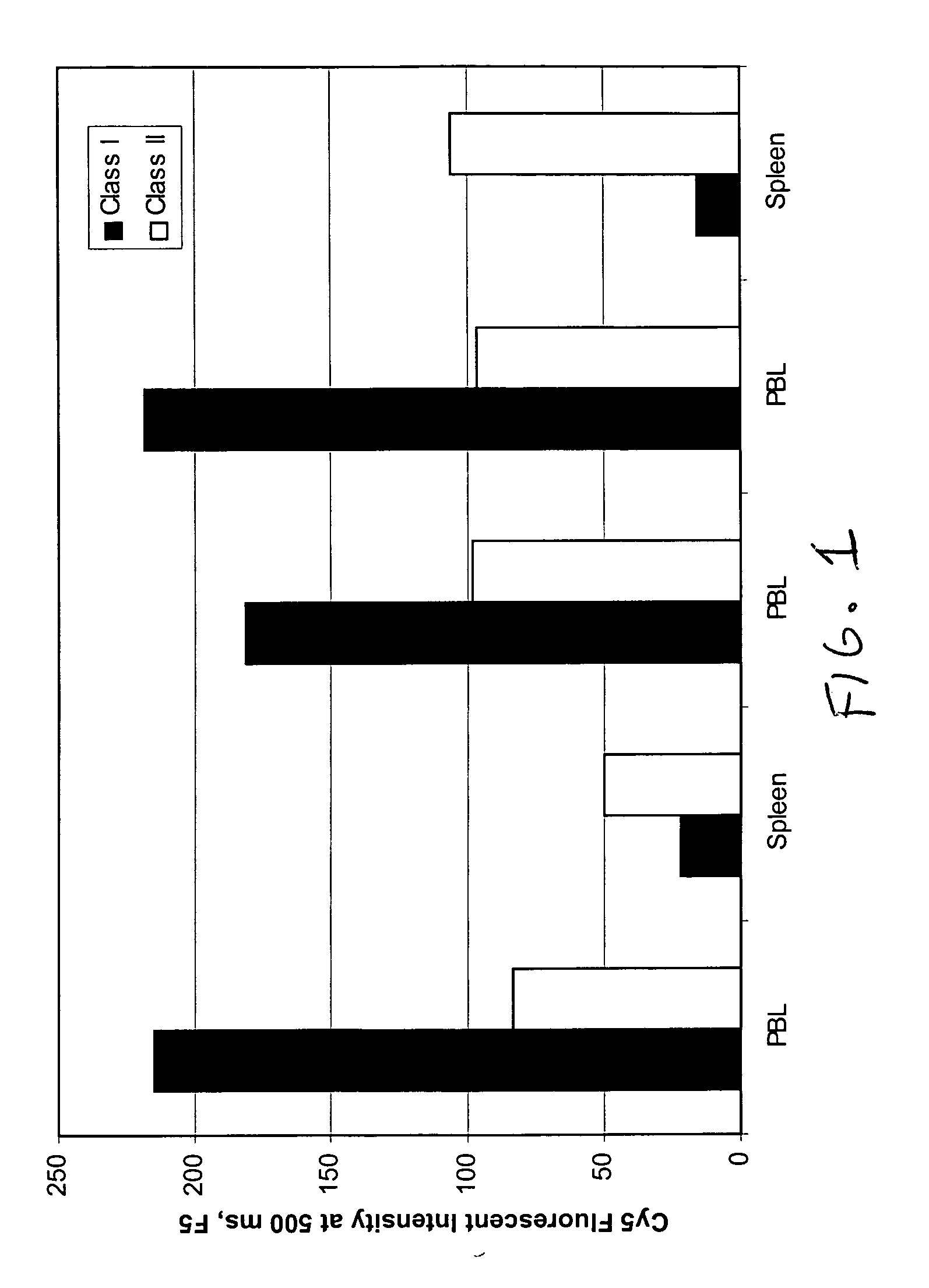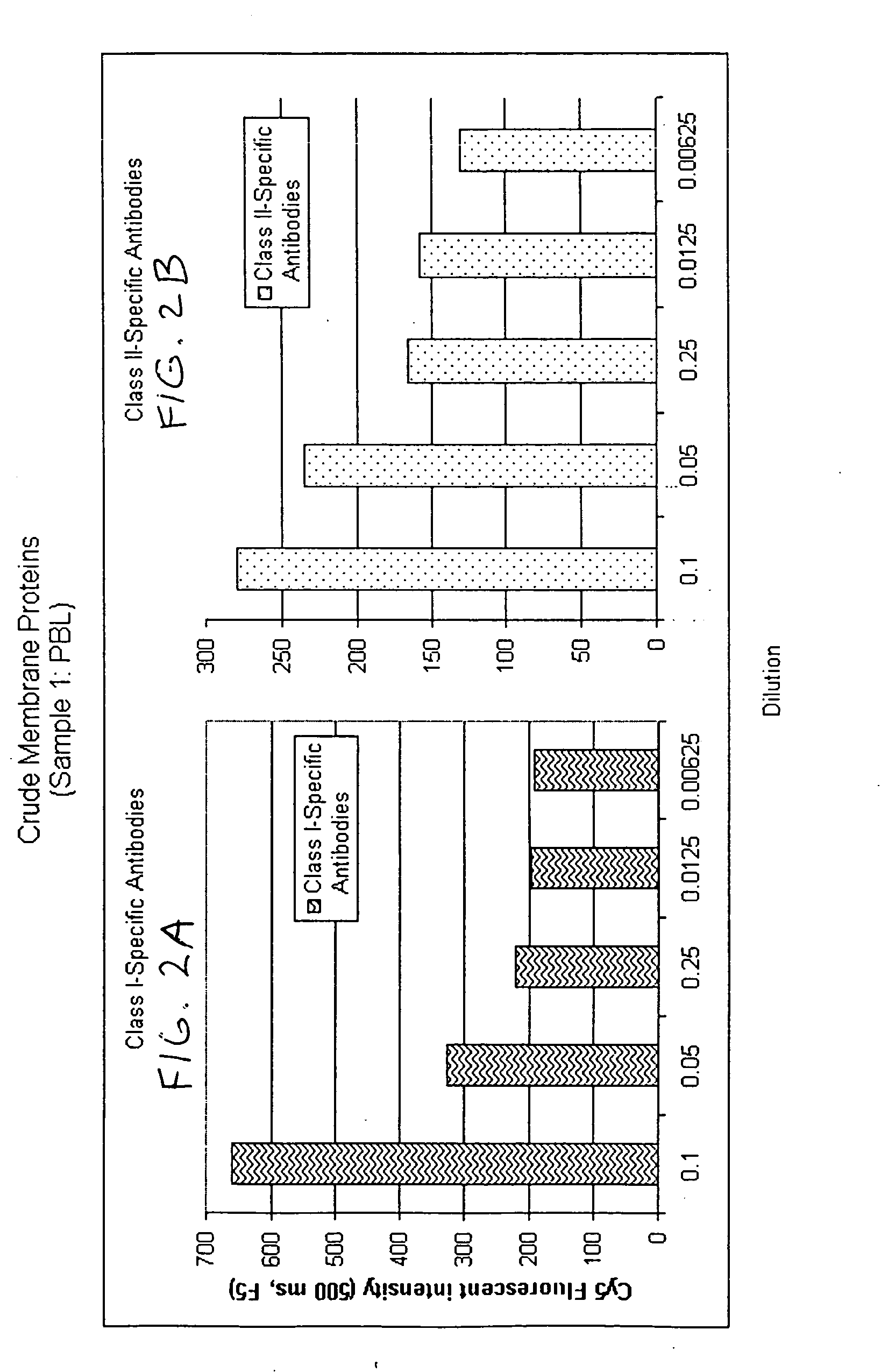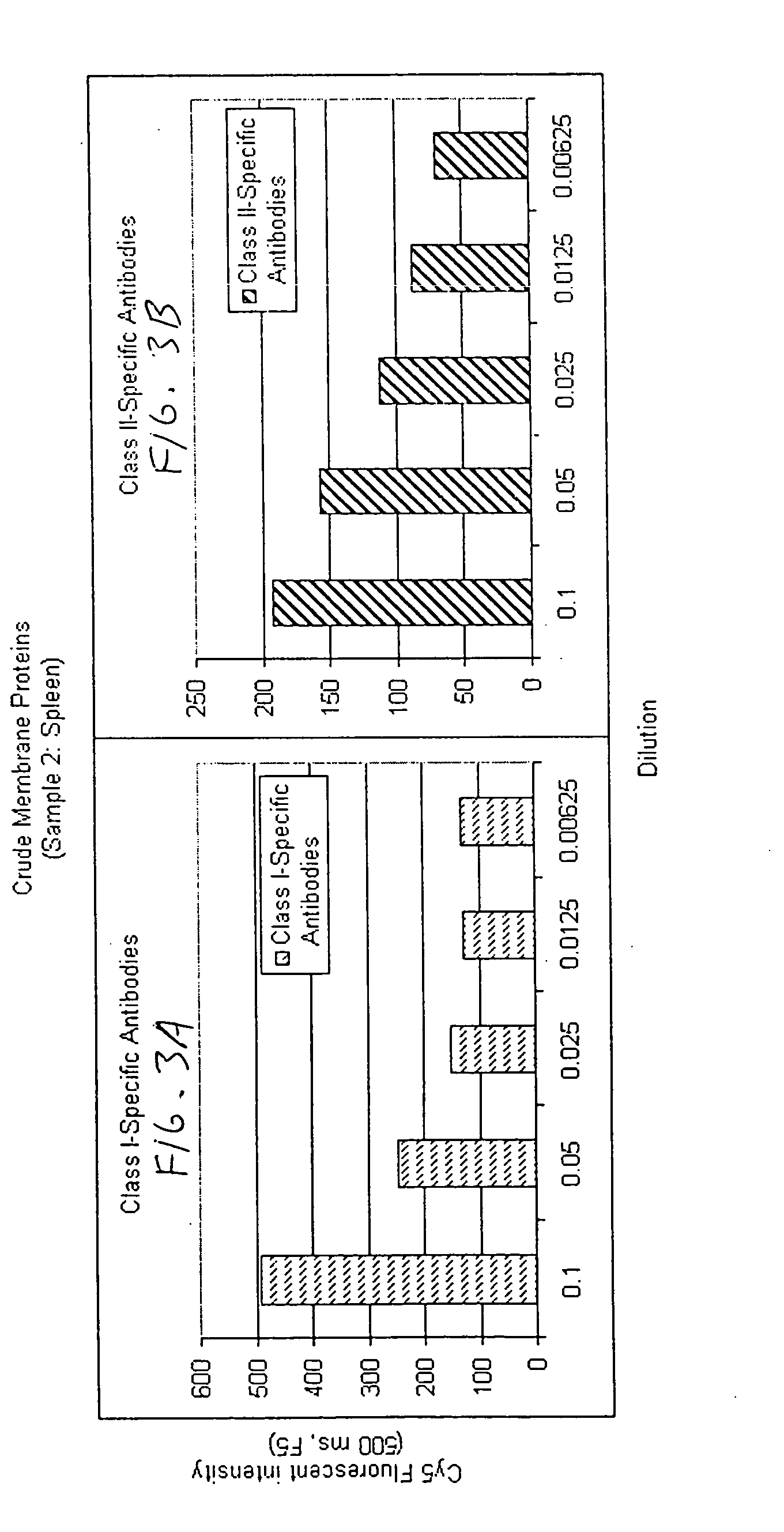Detection of cell membrane-associated proteins using membrane fragments displayed on encoded microparticle arrays
a technology of cell membrane and array, which is applied in the field of detection of cell membrane-associated proteins using membrane fragments displayed on encoded microparticle arrays, can solve the problems of predicting a high risk of graft rejection, adverse events or toxicities, certain drugs, etc., and achieves the effect of small size and increased assay accuracy
- Summary
- Abstract
- Description
- Claims
- Application Information
AI Technical Summary
Benefits of technology
Problems solved by technology
Method used
Image
Examples
example i
Extraction of Membrane Proteins from Lymphocytes
Membranes were extracted from human peripheral blood lymphocytes (“PBLs”) and from human spleen cell preparations using the following procedure. First, the cell samples were placed in separate tubes and spun down at 14,000 g for 2 minutes. Next, the supernatant was collected and aliquots were suspended in 50 μl of 50% glycerol in 1×PBS. All the samples were frozen at −86° C. for later use.
A protease inhibitor cocktail (Signia P8340) was prepared as 100 times concentrated stock solution, and added to the following homogenization buffer, which was used to disrupt the cell membrane solution under conditions preserving their integrity. The cocktail had the formula: 250 mM sucrose 10 mM HEPES 1 mM EDTA 1 mM PMSF
Protease inhibitor cocktail (the foregoing was brought up to 10 ml with H2O).
50 μl of ice cold homogenization buffer was added to the cell pellets. A mortar and pestle was used to grind the cell pellets, and the pestle wa...
example ii
Determination of Relative Abundance of Class I and Class II HLA in Different Cell Lines
Preparing Encoded Bead Arrays: Membrane preparations in PBS-CHAPS were extracted from different cell lines and were affixed to encoded beads of 3.2 micron diameter by placing 5 μl of a 1% suspension of such beads into each tube containing an entire preparation. Beads were collected, then resuspended in 100 μl of storage buffer containing 1% Bovine Serum Albumin with protease inhibitors. Beads coated with different membrane protein were pooled into one tube for assembly of bead arrays on chips (“BeadChips”). Overlapping pools of antigens are formed by including in the array membrane fragments from a sufficiently large number of cell lines so as to represent a sampling of antigens found in a normal population. Such an array permits the determination of a relative percentage of PRA simply by evaluating the percentage of bead types scoring positive in the assay.
Assay: Positive control sera reactiv...
example iii
Covalent Attachment of Proteins to Encoded Microparticles
Antibodies were covalently attached to tosyl-activated microparticles by the following method, which was used to attach anti-cytokine monoclonal antibodies to such microparticles. A similar method can be used to attach fragments, including Fab. Five hundred microlitres of PBST (Phosphate Buffered Saline (PBS), 1% vol / vol Tween-20, pH 7.2) were placed in a 1.5 mL Eppendorf tube, and fifty microliters of a suspension containing 1% w / w microparticles (0.5 mg beads) were added and mixed by vortexing. Beads were first collected by centrifuging for 3 minutes at 10,000 rpm and discarding the supernatant. Next, beads were washed once in 1 mL of PBST and once in 1 mL of PBS using centrifugation in each step as described above. Beads were resuspended in 500 μL of PBS, pH=7.2. A designated amount of specific proteins was added to each suspension at a concentration of 400 μg protein per mg beads. The coupling reaction was allowed to pro...
PUM
| Property | Measurement | Unit |
|---|---|---|
| sizes | aaaaa | aaaaa |
| sizes | aaaaa | aaaaa |
| sizes | aaaaa | aaaaa |
Abstract
Description
Claims
Application Information
 Login to View More
Login to View More - R&D
- Intellectual Property
- Life Sciences
- Materials
- Tech Scout
- Unparalleled Data Quality
- Higher Quality Content
- 60% Fewer Hallucinations
Browse by: Latest US Patents, China's latest patents, Technical Efficacy Thesaurus, Application Domain, Technology Topic, Popular Technical Reports.
© 2025 PatSnap. All rights reserved.Legal|Privacy policy|Modern Slavery Act Transparency Statement|Sitemap|About US| Contact US: help@patsnap.com



